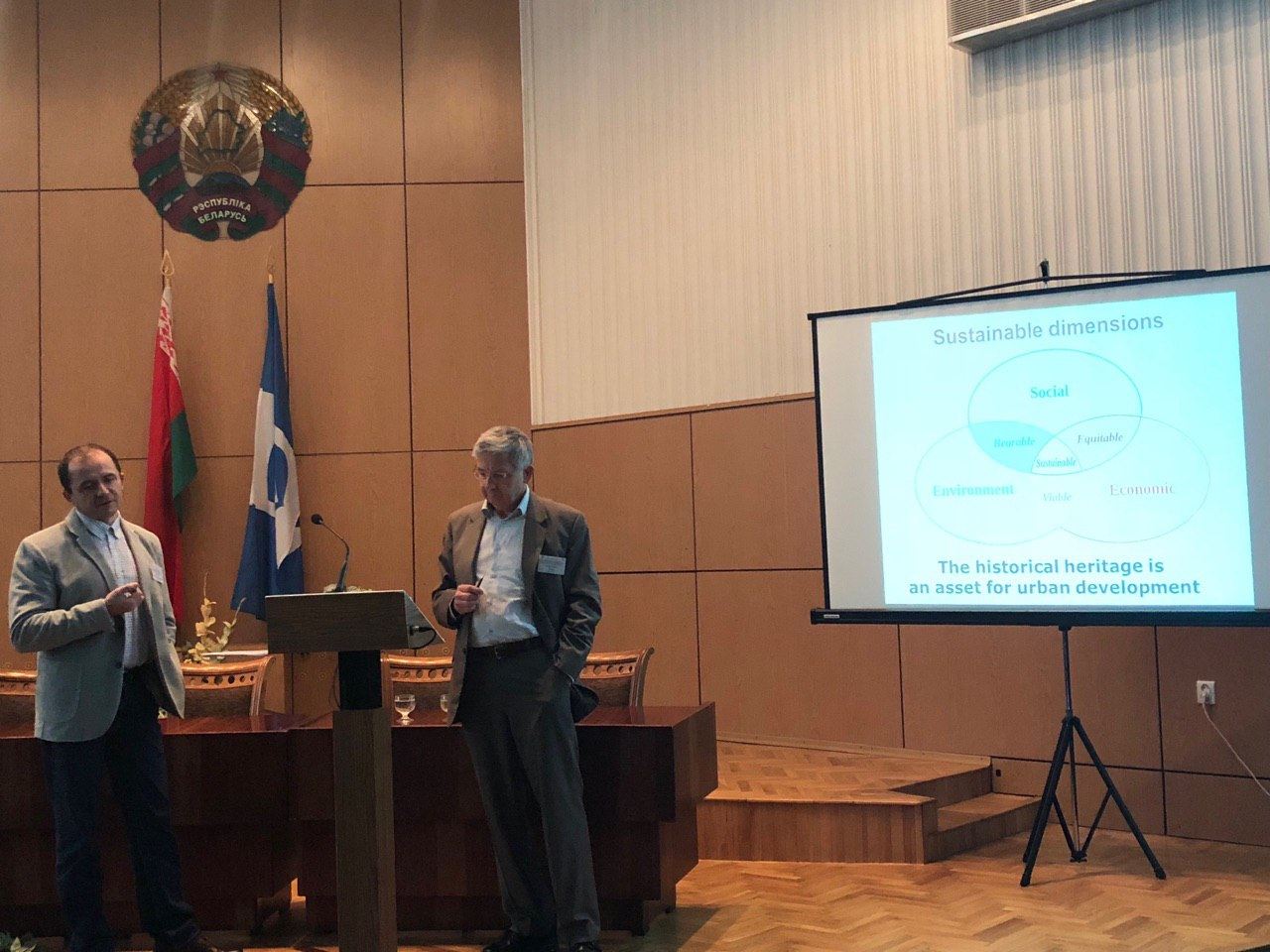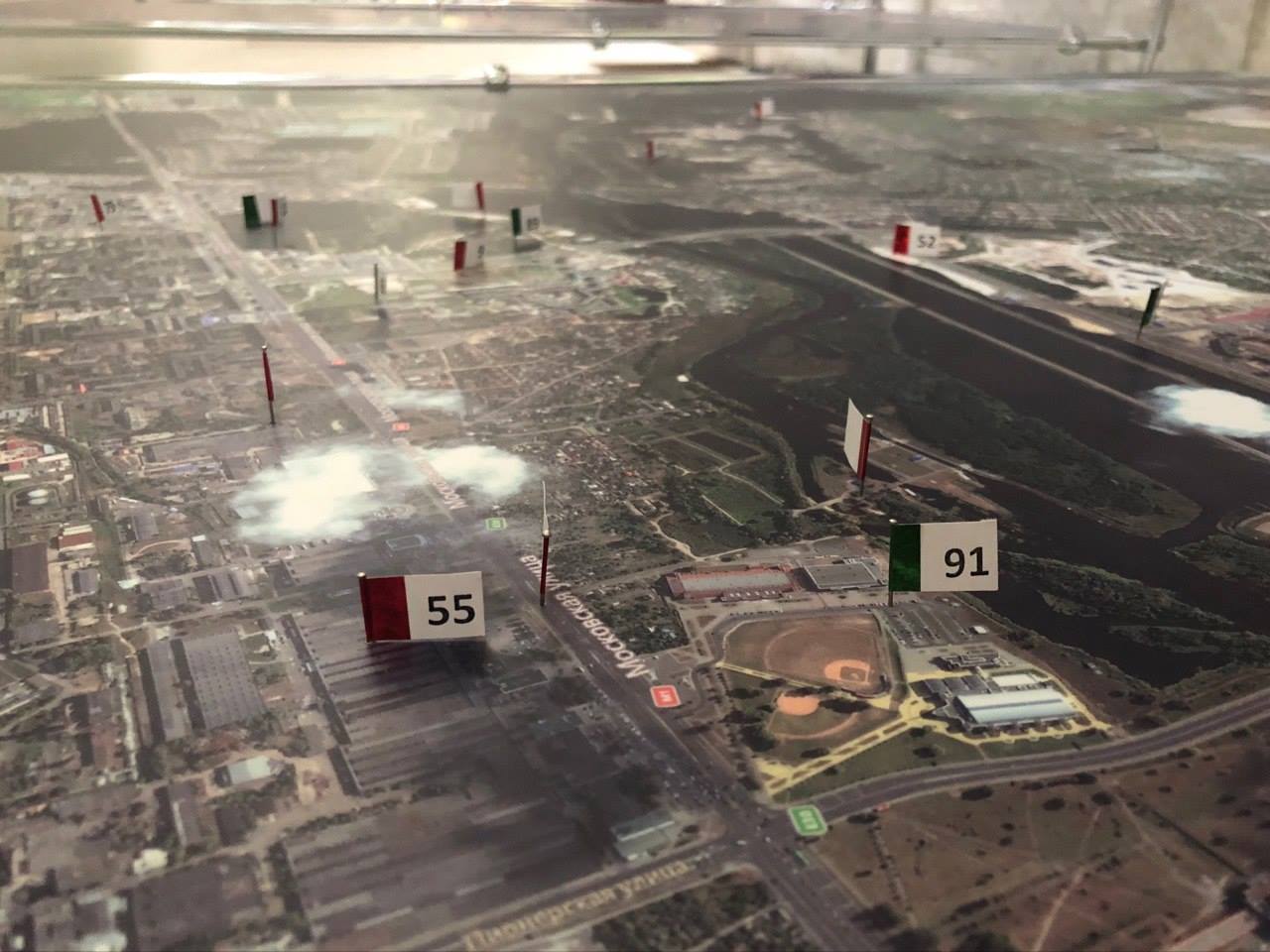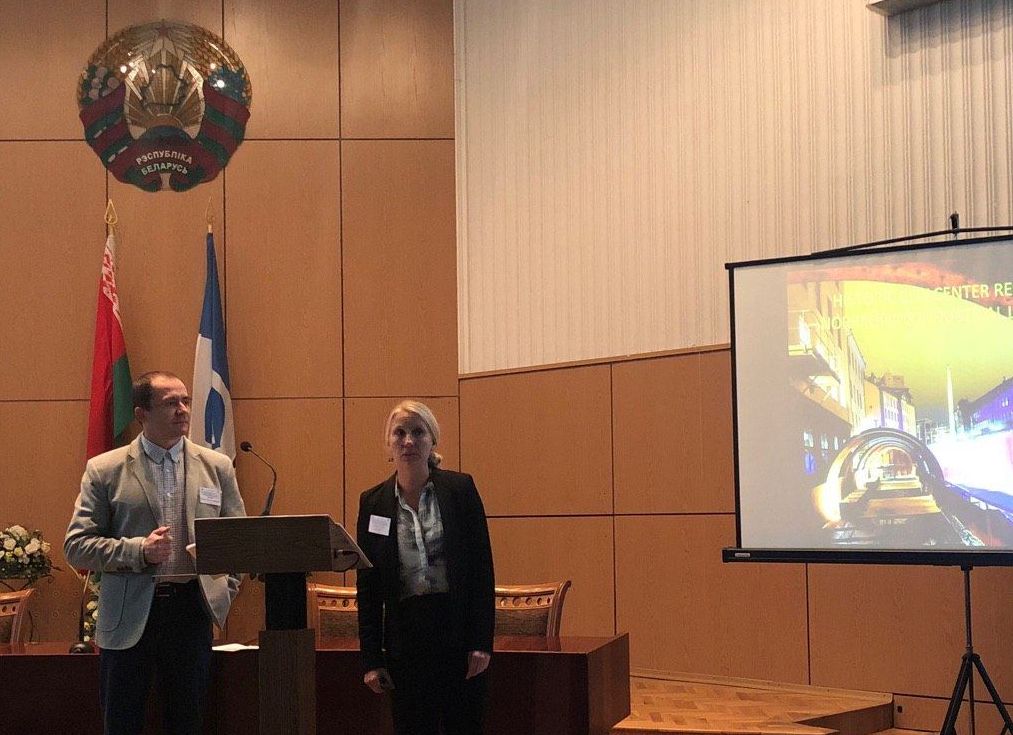02.11.2017
Issues of modern work methods of urban planning are discussed with the participation of Swedish experts in Brest
An international seminar, organized within the
framework of the joint Swedish-Belarusian project "Improvement of
Territorial Planning in the Cities of the Republic of Belarus",
implemented by Belarusian State Scientific and Design Institute of Urban Development
and Public Association "Land Reform" and
the Swedish National Authority for Mapping, Cadastral hold in the regional center was held from 30 October to 2 November 2017.
Specialists of the National Cadastre Agency took part in this event.
Swedish practicing architects, Klass Klasson and
Caroline Johansson, spoke at the seminar as experts in the field of Urban
Development. They presented the Swedish experience in the field of
reconstruction of historical heritage, including the former industrial zone,
creating conditions for the development of tourism and improvement of courtyardareas.
 During the meeting, the
participants also discussed issues
of organization of public places, ways of communication with the population and
organization of effective interaction of citizens, municipality and design
organizations.
During the meeting, the
participants also discussed issues
of organization of public places, ways of communication with the population and
organization of effective interaction of citizens, municipality and design
organizations.  Much attention was paid to the
concept of “Symbio City” using the example
of Swedish cities, where these cities are presented compact, green and smart, and
technical ideas on energy efficiency and competent recycling and recycling of
waste are realized in the territory of these cities.
Much attention was paid to the
concept of “Symbio City” using the example
of Swedish cities, where these cities are presented compact, green and smart, and
technical ideas on energy efficiency and competent recycling and recycling of
waste are realized in the territory of these cities.

Speeches of the
Belarusian representatives concerned the UNDP/GEF project on support of green
urban development in the small and average towns of Belarus, the purposes and the
action plans in its framework. In addition, issues related to project financing,
cleaning of lands after industrial enterprises were discussed at this seminar.
Also practical questions about the work of design services were asked during
the seminar.
First of all, specialists of the
National Cadastre Agency interested the issues of using the results of
cadastral evaluation in planning of the urban area and application of modern
work methods of urban planning which were considered in the example of the city
of Brest.
 During the meeting, the
participants also discussed issues
of organization of public places, ways of communication with the population and
organization of effective interaction of citizens, municipality and design
organizations.
During the meeting, the
participants also discussed issues
of organization of public places, ways of communication with the population and
organization of effective interaction of citizens, municipality and design
organizations.  Much attention was paid to the
concept of “Symbio City” using the example
of Swedish cities, where these cities are presented compact, green and smart, and
technical ideas on energy efficiency and competent recycling and recycling of
waste are realized in the territory of these cities.
Much attention was paid to the
concept of “Symbio City” using the example
of Swedish cities, where these cities are presented compact, green and smart, and
technical ideas on energy efficiency and competent recycling and recycling of
waste are realized in the territory of these cities. 